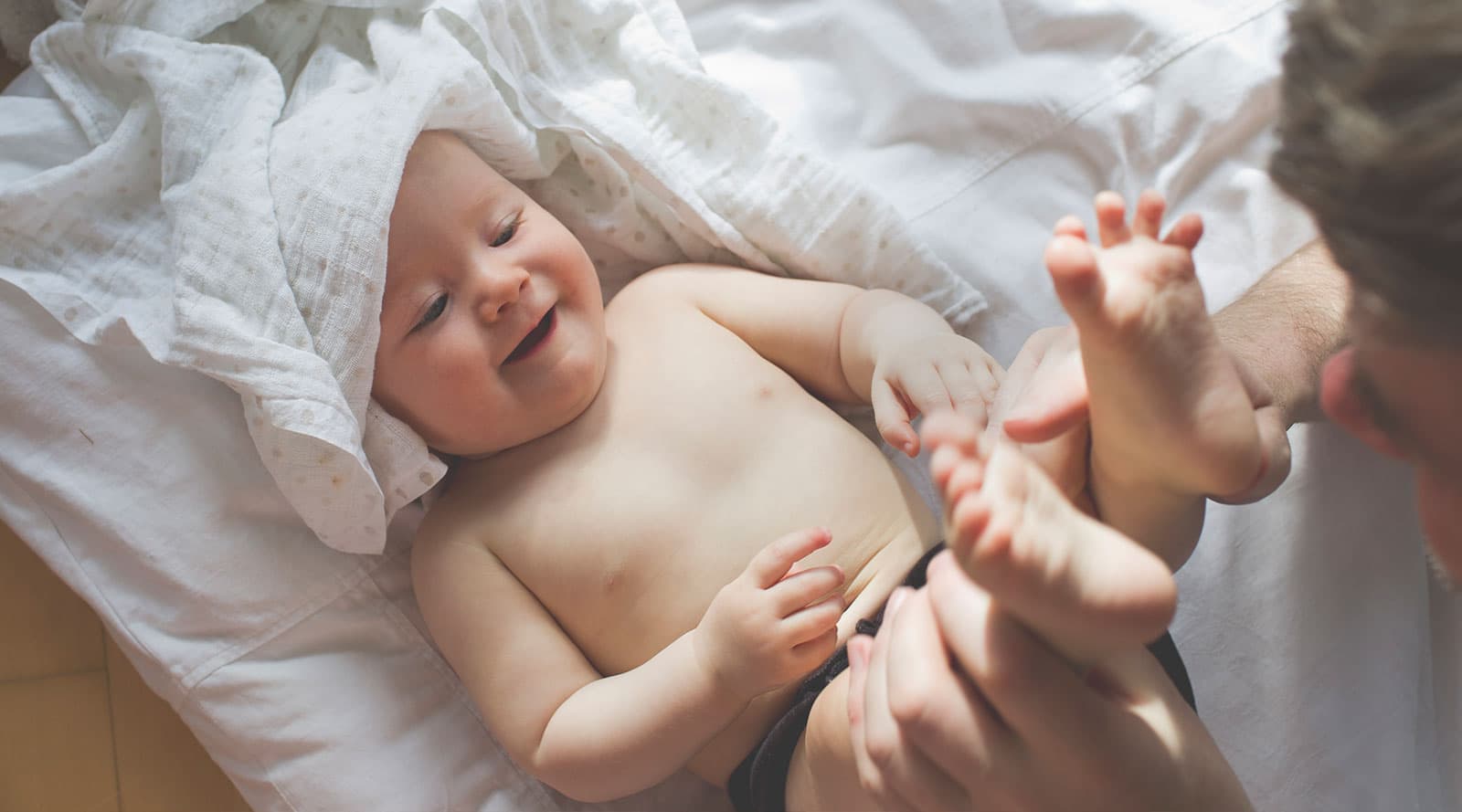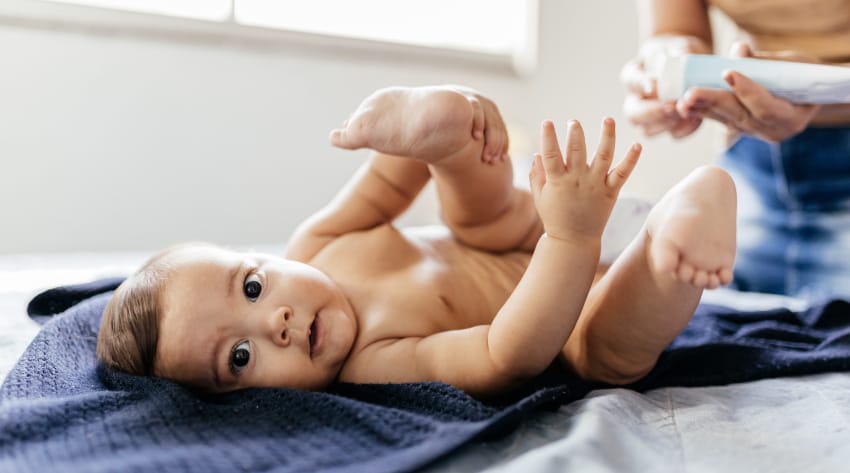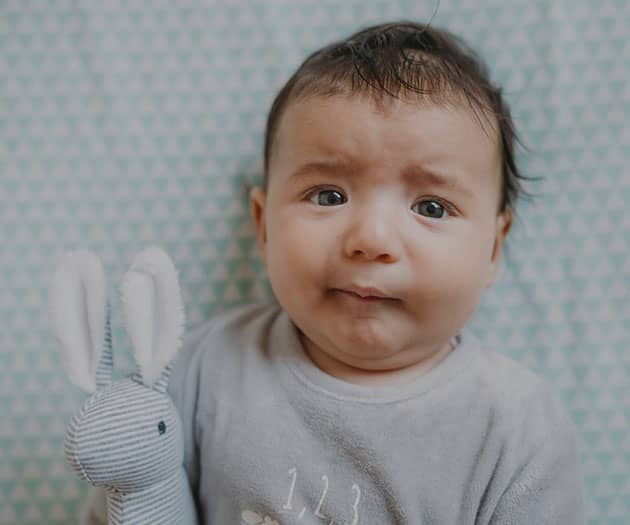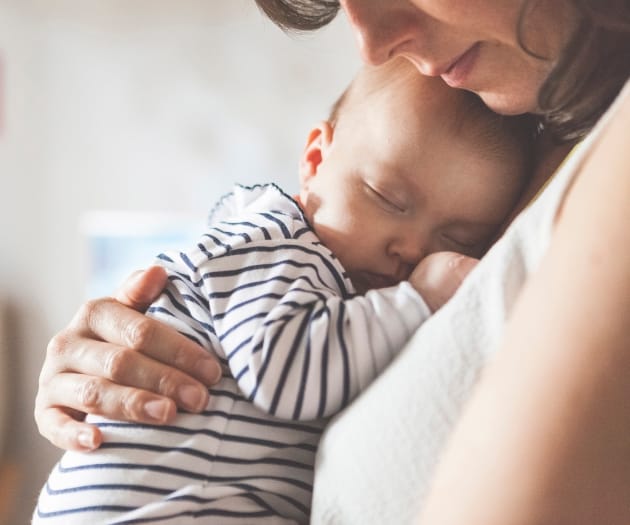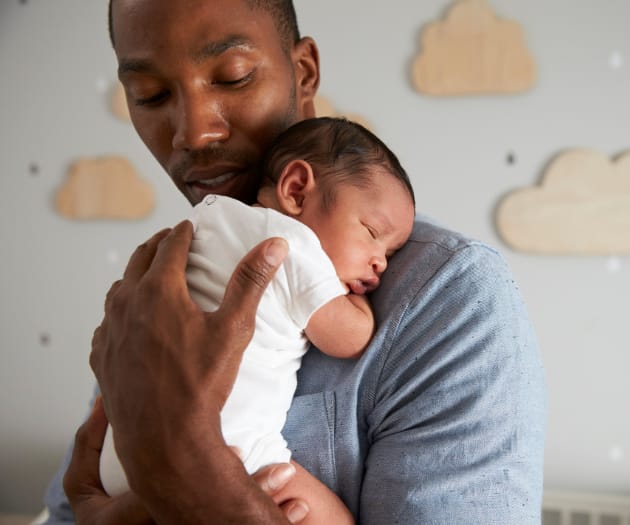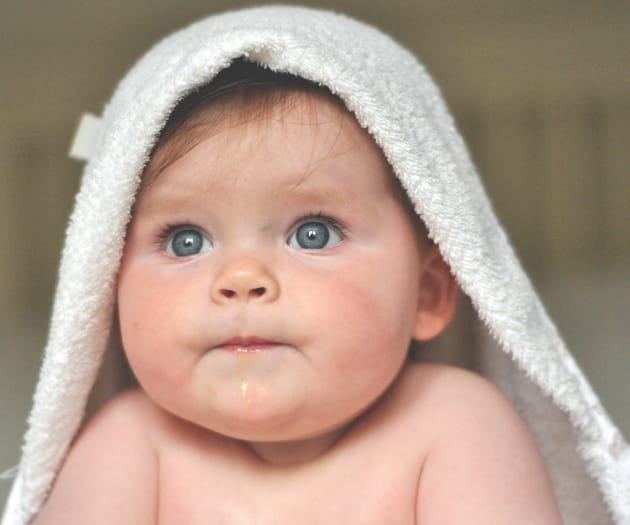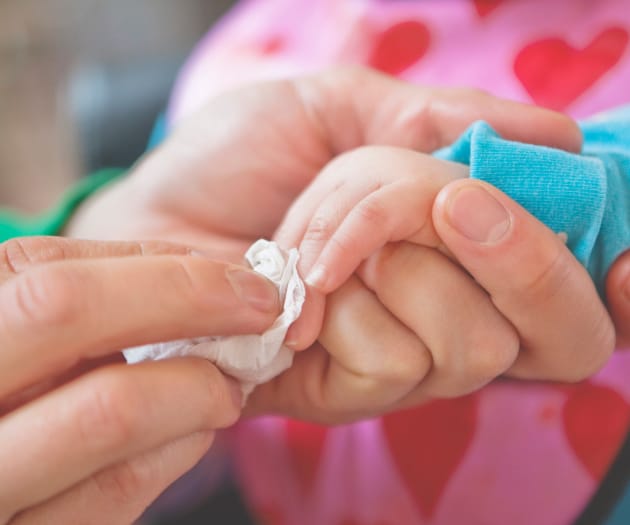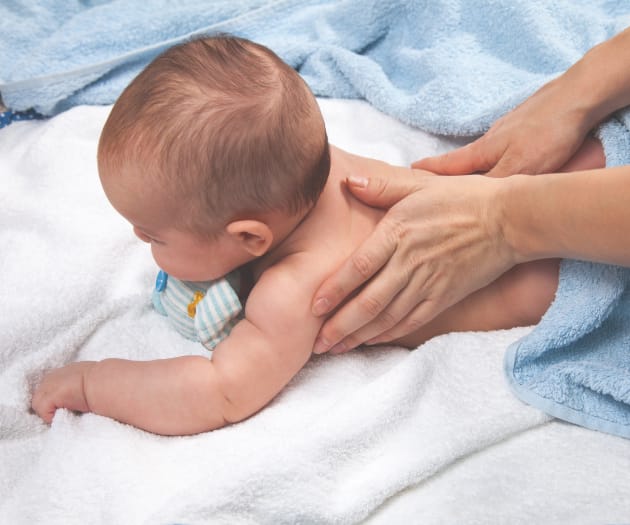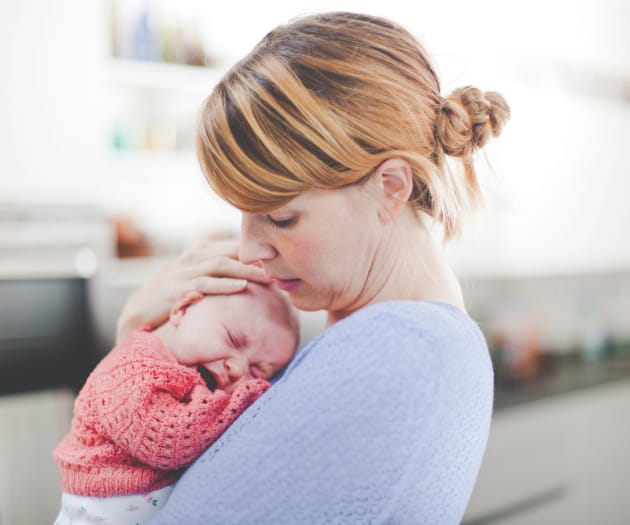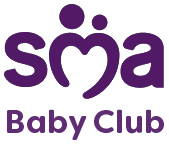Introduction
Changing your newborn’s nappy for the first time can be a bit daunting. Although it takes a little practice, soon changing nappies will become second nature.
We’ve put together this essential guide on how to change a baby’s nappy.
Things you need for changing a nappy
- Changing mat
- Clean towel
- New nappy
- Nappy sack
- Bowl of warm water
- Cotton wool or fragrance and alcohol-free baby wipes
Disposable or renewable? The nappy jury is still out on this one because what you might save on landfill you might lose on extra washing and water. Chemical-free, sustainable nappy brands seem the best ones to look out for.
How to change a nappy
- Hygiene first, wash your hands.
- Cover the changing mat with a towel and lie your baby on it.
- Undo and remove the nappy. If the nappy is full, use any clean edge to remove most of the mess. If the nappy is just wet, keep it underneath while you clean baby.
- Clean baby’s bottom thoroughly with clean cotton wool, dry or dipped in warm water. You could also use fragrance and alcohol-free baby wipes.
- For a baby girl, wipe from front to back. For boys, wipe from back to front. Then dry their bottom thoroughly with the towel. Don’t forget those creases.
- Lift baby’s legs up in one hand and slip the new nappy (tags at the back) under their bottom using the other hand. Bring the front of the nappy up to their waist and fasten the tags.
- Chat to your baby or pull funny faces to engage with them, whilst changing their nappy. This helps with bonding and can also help their development.
- Hygiene last, wash your hands.
Good-to-knows for nappy changing
- If you can, make space for a changing station. A place where you can leave all of your nappy changing supplies so they’re close at hand.
- When travelling, make sure you take enough supplies. A baby could need 6-12 nappies per day. It’s a good idea to have one packed so you can just grab it and go when you need to.
- Wondering where to start with that changing bag? Get a few pointers from our guide on how to plan days out with babies.
- When it comes to nappies and the environment, it can be confusing. What you reduce on landfill with reusable nappies you might increase on washing impact, unless your washing is powered by renewables - there’s also the excess water to think of. If you’re leaning towards disposables perhaps going for chemical-free, sustainable nappy brands will be a worthwhile compromise.
- If using a changing table, make sure you keep an eye on your baby at all times, never walk away or turn your back on your baby, they are keen wrigglers.
Over the next few months, you’re going to do a lot of nappy changes. So, here’s a helpful nappy change advice list, to make every nappy change smooth like a baby’s bottom.
Let’s talk about the colour of baby poo
The first few nappy changes might contain a surprise: black or dark green poo with a strange, sticky texture. This is called meconium. During the nine months of pregnancy baby ingested a variety of waste matter such as mucus, bile, cells, amniotic fluid, lanugo and their own hair. These somewhat odd-looking parcels you unwrap from your baby are actually completely normal. In fact, it’s a good sign that baby’s digestive system is doing its job.
After a few days of milk, the baby poo will turn yellowish. If you’re breastfeeding it can be watery, and mustard-like. If you’re formula feeding, there’s a chance it may be a bit darker, firmer… and, sorry, smellier.
For more poo-related facts, from a spectrum of stool colours to a range of nappy numbers, go to our own page of all things baby poo.
How to avoid infection and how to treat a nappy rash
- Remember to wash your hands after every nappy change.
- Change any wet and dirty nappies as soon as you can, to prevent nappy rash. How often you’ll be doing this will depend on your baby. When they’ve got to go, they’ve got to go.
- Baby nappy rash is a common irritation of the skin. Prevention is the best treatment. So try to keep your baby’s bottom clean and dry. Applying barrier cream regularly usually helps.
- Nappy rash usually clears up after about three days, but if the rash is not improving or causing your baby discomfort, contact your GP or health visitor for advice.
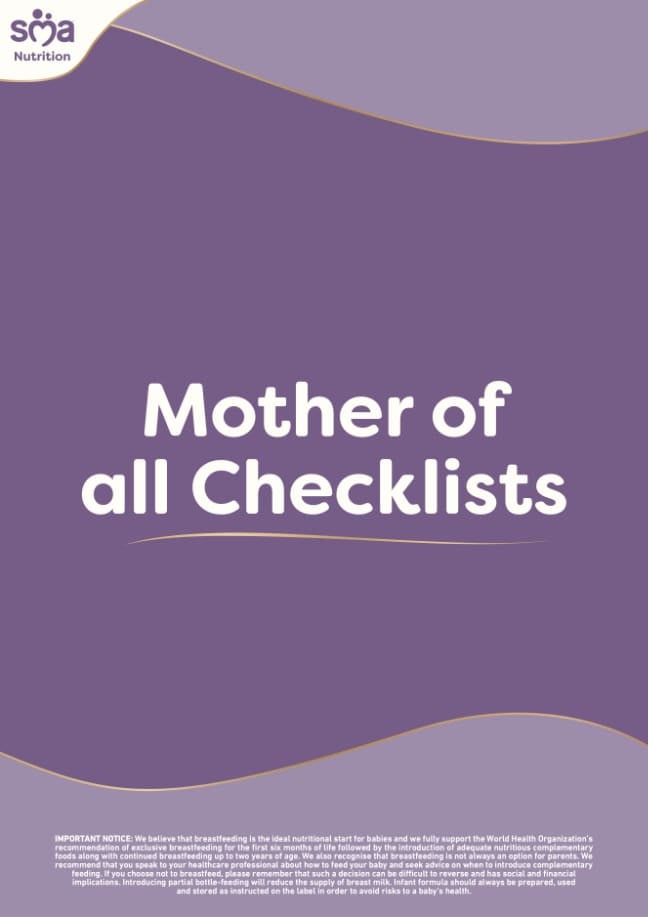
Join SMA® Baby Club to receive the Mother of all Checklists. With 63 checklists across your parenting journey from pregnancy through to toddlerhood we have you covered.



